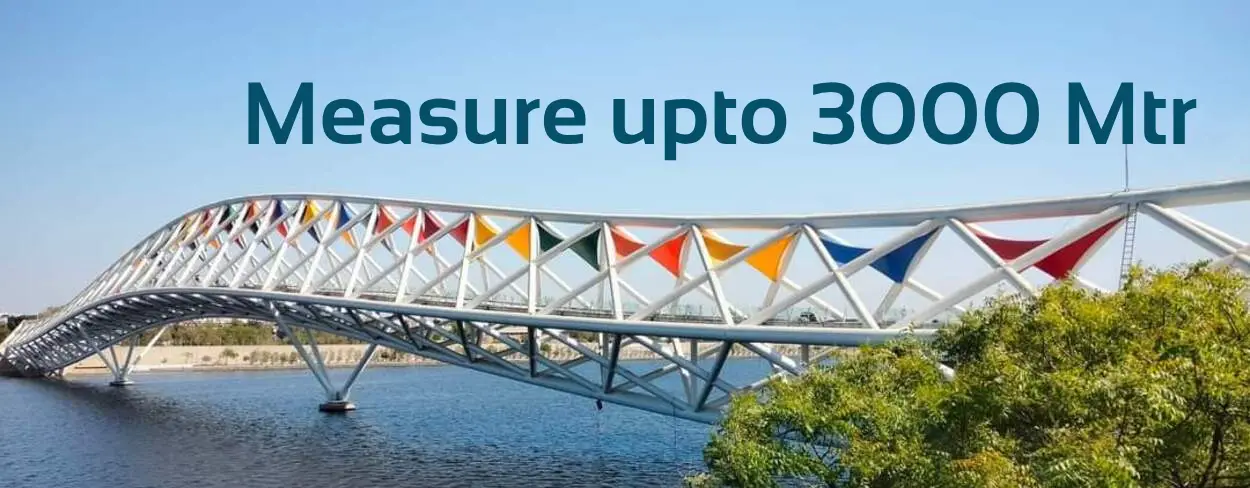Long Range distance sensor
Long-range distance sensors utilize various technologies such as laser, ultrasonic, and radar to accurately measure distances over significant spans.
- Home
- Products
- Distance Sensor
- Long Range distance sensor
Enquire Now
Let us help you
Long Range distance sensor
Long-range distance sensors utilize various technologies such as laser, ultrasonic, and radar to accurately measure distances over significant spans. These sensors are integral in applications requiring precise spatial awareness.

By implementing a long-distance range sensor, users can achieve extended distance measurement with remarkable accuracy, even in challenging environments. High-range distance sensors effectively minimize errors caused by environmental factors like light and sound interference. This capability is particularly advantageous in sectors such as construction, surveying, and outdoor navigation, where precision is paramount. As technology evolves, these sensors continue to enhance their performance, offering faster response times and greater reliability. Consequently, industries increasingly rely on these sophisticated tools to streamline operations and improve overall efficiency in projects that demand critical distance accuracy.
Key Applications of Long-Range Distance Sensors
Robotics
In robotics, long-range distance sensors help navigate environments by detecting obstacles and mapping surroundings, enabling safe and efficient movement. The long-distance range sensor enhances operational efficiency in industries like construction and surveying.
By employing high-range distance sensors, professionals can achieve extended distance measurement with remarkable accuracy, streamlining project timelines and reducing human error. These sensors not only facilitate precise data collection but also improve decision-making processes by providing real-time information.
In logistics, for instance, they optimize warehouse management by ensuring effective space utilization and inventory tracking, demonstrating their versatility across various sectors. Ultimately, integrating these technologies leads to enhanced productivity and safety in diverse applications.
Automotive Safety
Many modern vehicles are equipped with long-range distance sensors as part of advanced driver-assistance systems (ADAS). These sensors enhance features like adaptive cruise control, collision avoidance, and parking assistance by providing real-time distance data from other vehicles and obstacles.
Furthermore, long-range distance sensors are revolutionizing the way industries approach automation and safety. In manufacturing, for instance, they facilitate precise robotic movements and improve assembly line efficiency by accurately gauging distances between components. This technology not only minimizes operational delays but also enhances worker safety by preventing collisions in busy environments.
Additionally, in agriculture, high-range distance sensors enable farmers to monitor crop health and optimize planting strategies through effective spatial analysis. The ongoing advancements in sensor technology promise even greater capabilities, ensuring that extended distance measurement remains a critical asset across various fields.
Industrial Automation
In manufacturing and warehousing, long-range distance sensors are used for automated guided vehicles (AGVs) and robotic arms to optimize material handling processes. They ensure safe operation by detecting the proximity of objects and adjusting paths accordingly.This integration of high-range distance sensors into industrial automation enhances operational workflows significantly. Accurate and extended distance measurement allows automated systems to navigate complex environments with ease, reducing the risk of accidents and improving productivity.
Moreover, these sensors enable predictive maintenance by monitoring equipment conditions in real time, thereby preventing costly downtimes. As industries increasingly embrace smart technology, the role of long-distance range finders will expand further, paving the way for innovations like autonomous delivery systems and precision agriculture tools. This synergy between sensor technology and automation is poised to redefine efficiency standards across sectors.
Surveying and Construction
Long-range distance sensors are essential in surveying applications, allowing for precise measurements of land and structures. They can assist in mapping, leveling, and ensuring accurate construction layouts.
Mapping
Facilitates the creation of environmental maps for better spatial awareness. Long-range distance sensors are revolutionizing various industries by providing real-time data that enhances operational capabilities. For instance, in environmental monitoring, these high-range distance sensors can measure vast terrains with exceptional precision, aiding in ecological assessments and conservation efforts.
Furthermore, their ability to operate under diverse conditions ensures consistent performance, even in adverse weather. This adaptability is critical for applications like disaster management, where accurate distance measurements can significantly impact response strategies. As the technology matures, further improvements in sensor accuracy and integration with IoT devices promise to expand their utility across even more fields, fostering innovation and efficiency.
Operational Efficiency
Enhances productivity in sectors like construction and surveying through accurate distance measurements. The integration of long-distance range finders into various sectors not only enhances measurement accuracy but also consist innovative approaches to problem-solving. In the realm of logistics, for instance, these high-range distance sensors can streamline inventory management processes by providing precise distances for optimal storage solutions.
Similarly, in environmental monitoring, they facilitate extensive assessments of natural resources, enabling more informed decision-making regarding conservation efforts.
Moreover, as industries embrace automation, these sensors will play a pivotal role in ensuring safety and efficiency on production lines and construction sites alike, transforming operational capabilities across the board.
Automotive Safety
The integration of long-distance range finders into automotive safety systems represents a significant leap forward in vehicular technology. By continuously measuring distances to surrounding objects, these high-range distance sensors empower features like lane departure warnings and automatic emergency braking. This real-time data not only enhances driver awareness but also serves as a critical layer of protection against potential collisions.
As manufacturers increasingly prioritize safety, the reliance on these advanced sensors is expected to grow, paving the way for more autonomous driving solutions. Ultimately, this evolution underscores the importance of precision in creating safer roadways for everyone involved.
ADAS Features
Integral to systems such as adaptive cruise control, emergency braking, and parking assistance. The versatility of long-distance range finders extends beyond mere distance measurement; they are becoming indispensable in fields like agriculture, where precision is vital for optimizing crop yields. By employing high-range distance sensors, farmers can monitor field conditions and assess plant health from afar, enabling targeted interventions.
Additionally, in urban planning, these sensors aid in analyzing spatial data to inform infrastructure development. Their ability to integrate seamlessly with mapping technologies further enhances decision-making processes, allowing for smarter city designs. As such innovations continue to unfold, the implications for increased efficiency and sustainability are profound across multiple sectors.
Collision Avoidance
Provides critical data to help prevent accidents by detecting nearby vehicles and obstacles. The future of long-distance range finders looks promising, with advancements in artificial intelligence enabling even smarter distance measurements.
These high-range distance sensors are being integrated into drones for aerial surveying, allowing for extensive topographical mapping and data collection from previously inaccessible areas. In agriculture, they facilitate precision farming by assessing crop health and optimizing irrigation systems based on real-time environmental conditions.
As industries increasingly adopt these innovative technologies, the potential for enhanced efficiency and sustainability continues to grow, paving the way for a more connected and resource-efficient world. The applications are virtually limitless, driving progress across sectors.
Material Handling
Optimizes processes by ensuring safe interactions with other machinery and personnel. The ongoing advancements in long-distance range finders are paving the way for unprecedented applications across sectors. In environmental conservation, high-range distance sensors now aid in monitoring wildlife movements and habitat changes, ensuring effective biodiversity preservation.
Similarly, smart agricultural practices leverage these sensors for precision planting and resource management, drastically minimizing waste. The advent of IoT integration further amplifies their capabilities, allowing real-time data sharing that enhances decision-making processes. As industries harness the power of these sophisticated tools, we can anticipate not only improved productivity but also a significant shift towards sustainable practices that prioritize both efficiency and ecological health.
FAQs
What are Long-Range Distance Sensors?
Long-range distance sensors are electronic devices that can accurately measure distances over extended ranges, typically beyond the capabilities of traditional sensors. These sensors utilize various technologies such as LiDAR, ultrasonic waves, or infrared light to determine the distance between the sensor and the target object.
How Do Long-Range Distance Sensors Work?
Long-range distance sensors work based on the principle of time-of-flight measurements or triangulation. Time-of-flight sensors emit a signal towards the target object and calculate the distance by measuring the time taken for the signal to return. Triangulation sensors use angles and known distances to calculate the range to the target object.
What Are the Applications of Long-Range Distance Sensors?
Long-range distance sensors find applications in autonomous vehicles for obstacle detection, in industrial settings for inventory management and positioning, in security systems for perimeter monitoring, and in agriculture for crop monitoring. These sensors play a crucial role in enhancing efficiency, safety, and accuracy in various domains.
What are the Benefits of Using Long-Range Distance Sensors?
The use of long-range distance sensors offers several benefits, including high accuracy in distance measurements, extended range capabilities, reliability in various environmental conditions, and the ability to detect multiple objects simultaneously. These sensors enable precise and reliable distance measurements, making them indispensable in modern technological applications.

